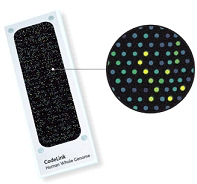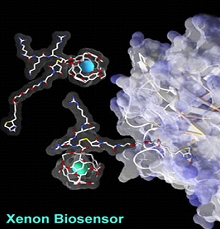Micro and nanotechnologies will have a high impact on the pharmaceutical industry making the way to personalized therapy for better treatment efficiency and fewer side effects.
Micro and nanotechnologies will support pharmaceutical companies in their development strategy by providing solutions to:
• Discover new drug candidates and therapeutic pathways
• Reduce new therapies development time
• Facilitate drugs launching with adapted delivery systems
• Provide better treatment performances
• Extend pharmaceutical products lifecycle thanks to innovative delivery systems.
This article gives an overview of micro and nanotechnologies and the way they impact the pharmaceutical industry using product and development case studies.
Microtechnologies are related to micro manufacturing processes leading to miniaturized devices. It involves specific material and process technologies like micromachining or etching of layers staked for structuration with lithography techniques.
First developed for automotive and IT applications, microsystems technologies are today a main miniaturisation approach for Life Science applications.
Nanotechnologies are techniques allowing to synthesize, transform, measure, manipulate and assemble objects whose dimensions are less than or around 100 nanometers (nm) in order to work out special properties or functions like new mechanical, optical, electrical, magnetic, chemical and biological properties. Microtechnologies have first led to miniaturised solutions whose performances are today enhanced by nanotechnologies.
Microtechnologies have shown their high added value in supporting pharmaceutical R&D efforts, in improving the drug discovery process results, in proposing new and faster analysis possibilities while notably reducing the analysis cost.

Figure - 1: GE Healthcare CodeLink Microarray
Microtechnologies offer the advantages of miniaturisation to:
- reduce cost by lowering sample volume and reagents used
- enable faster analysis
- enable high parallelisation
- enable multiplex analysis
- provide with higher accuracy
Miniaturised microtiter plate up to 1536 wells in combination with microdispensing systems (nl range up to pl) are examples of solutions provided in such objectives.
Other good examples are microarrays, microsystems with tailored surface properties (figure-1). They offer a high parallelization of analysis, leading to higher throughput and enhanced efficiency. They are the key solution to manage the high complexity level linked to molecular biology.
This first microarray based on microtechnologies has successfully reached the market and is now becoming a gold standard in drug discovery both in academic and industrial research labs. It is produced by Affymetrix (US) with a process allowing the synthesis of nucleic acid probes on a glass wafer substrate.
Some limits still remain especially in terms of sensitivity and reproducibility. Going a level forward, nanotechnologies are now entering the field to provide solutions for new biochips generation.
While microtechnologies indeed bring the advantage of miniaturisation, nanotechnologies offer new physical, chemical and biological properties of materials at the nano scale:
• Nanocoatings further expand microarrays applications by allowing the attachement of a broad range of probes
• Nanotechnologies provide new surface to increase the biochips' sensitivity
• Nanotechnologies make it possible to analyse interactions directly at the molecule level with sensors relying on conformational changes in biomolecules (figure 2)
LabChip 3000 from Caliper Life Sciences (US) is a good example of microfluidics device. Recently Caliper Life Science announced that 12 of the top 15 pharmaceutical companies actively use Caliper systems in their discovery efforts, including AstraZeneca, Novartis and Vertex Pharmaceuticals.
Microtechnologies thus help scientists better predict which compounds will be successful drug candidates.

Figure - 2: Xenon Biosensor
Another emerging trend is to use microtechnologies in a production device integrating mixing and production reaction. Micro Reaction Technology (MRT) has the following advantages:
- help process intensification by reducing the size of the plant, the amount of reagents and catalyst, enhancing the speed of reaction and heat exchanges.
- higher chemical efficiency, leading to higher yield obtained at lower temperatures and with less catalyst.
- set up of new processes and new chemical pathways. It will lead to the synthesis of new molecules that were previously not achievable.
MRT also will enable to reduce the cost of the manufacturing, which is a major advantage in a competitive environment.
Top pharmaceutical companies are already assessing microreaction technologies.
Micro and nanotechnologies are also showing a very high potential in drug delivery. Areas of high value addition are:
• Facilitate drug launching with an adapted delivery system
• Provides better treatment performances
• Work in a non-invasive way
• Be as small and compact as possible to be easily implanted in the body or portable for emergency tools
• Extend pharmaceutical products lifecycle thanks to innovative delivery systems.
Those miniaturization techniques have thus proven their added value in therapy through new generation medical devices. The commercialised product Respimat® Soft Mist™ Inhaler of Boehringer Ingelheim microParts for asthma or chronic obstructive pulmonary disease (COPD) treatment is a good example. Such device increases lung deposition by reducing side effects.
Many developments are running in this field especially for implantable intelligent delivery systems with an actuation mode, allowing drug dispense with a specific dosing. For example ChipRX Inc (US) is working on the development of a Self Regulating Responsive Therapeutic System (figure 3).
Future nanoparticles will act as the most suitable drug targeting system by providing treatment at the molecular level. They provide controlled drug release, reduce side effects, and make possible to deliver new drugs candidates not adapted to conventional delivery solutions.

Figure - 3: ChipRX Self Regulating Respective Therapeutic System
Micro and nanotechnologies provide solutions to drive innovation in the next therapies strategies both from a molecule and delivery strategy perspective.
In the future, micro and nanotechnologies will make the bridge between diagnosis and treatment. Such bridge is named “theranostics”. Micro and nanotechnologies will thus have a high impact on the pharmaceutical industry making the way to personalized therapy for better treatment efficiency and fewer side effects.
In 2004, Boehringer Ingelheim acquired microParts, a MEMS contract manufacturer illustrating the attractiveness of microtechnology for pharmaceutical companies. Other pharmaceutical companies are today actively investigating those technologies through the setting up of collaborations with technology providers. Indeed many competencies have been developed worldwide by start ups, SMEs and major players of the microtechnologies industry to provide attractive solutions.
Micro and nanotechnologies are a powerful way for the pharmaceutical industry to strengthen its innovation strategy.
Data extracted from Yole Développement reports: LifeScienceIC, EMMA, NanoSEE
Yole Développement is the market research consulting company in the micro and nanotechnologies field providing marketing, technology and strategic analysis for business development.
For more information please visit our website: www.yole.fr